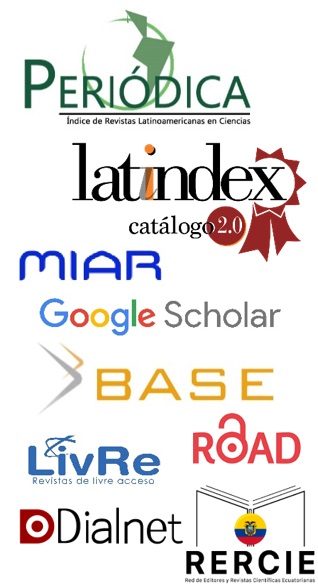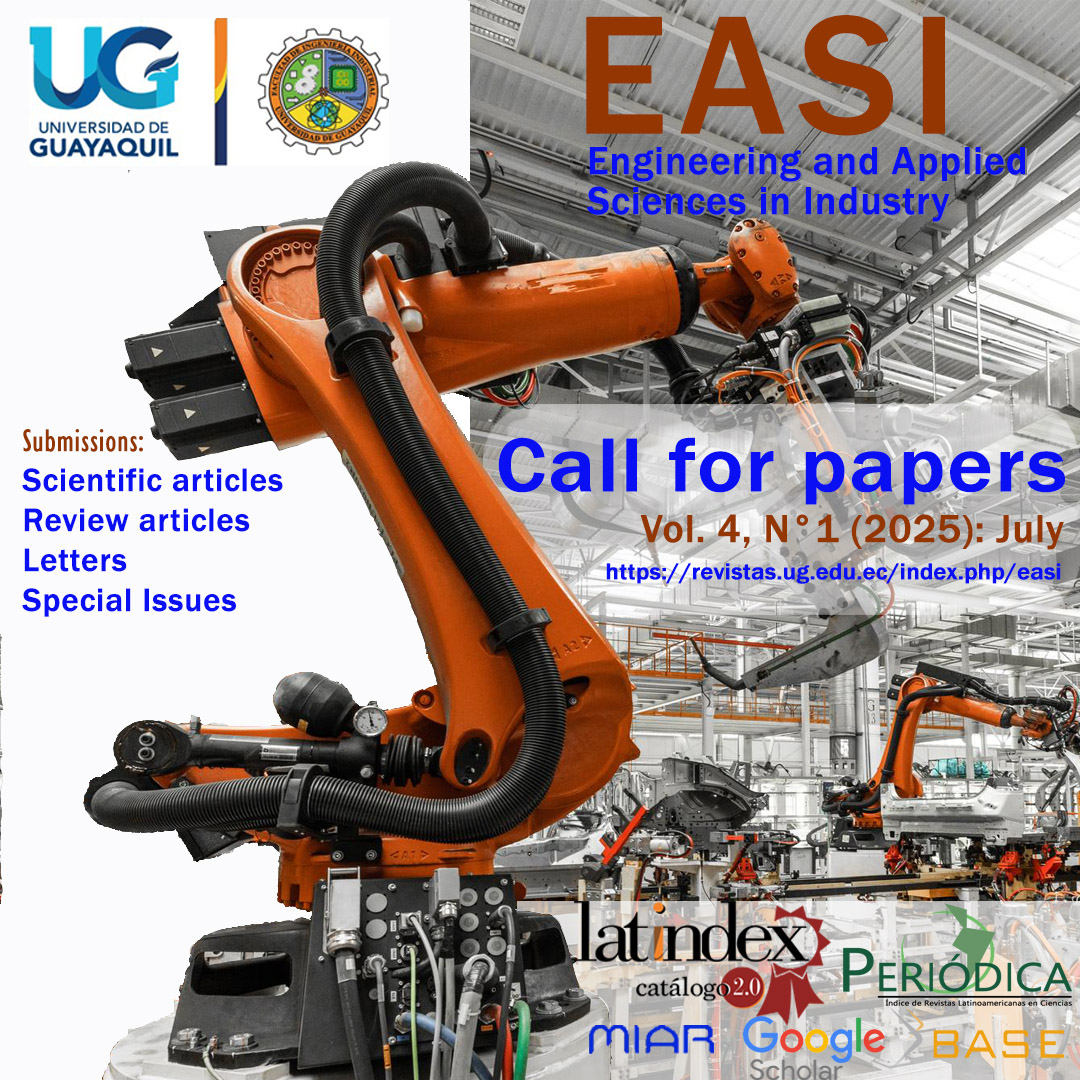Industry 4.0: An innovative manufacturing process on a Digital Twin Application
DOI:
https://doi.org/10.53591/easi.v2i1.2176Keywords:
Industry 4.0, Digital Transformation, Micro-Manufacturing, Single Edge Micro-Cutting, Cyber-physical systemsAbstract
The fourth industrial revolution requires the process equipment to work together through the strategy of cyber-physical systems. This project aims to contribute to this revolution by presenting a tool and methodology for creating cyber-physical systems. A V-model was used for the design process, in which the digital twin of a 3PRS+XY+C machine tool was developed. It started by defining the requirements, the basis for creating the logical-functional structure. This structure was the guide for completing the behavioural models of each element, the cascade control, and the 3D design of the machine. The simulation was carried out with the digital twin ready to verify the correct operation. A position and speed test were performed with step start and a second order signal showing proper control and compliance with the setpoint. The tests performed show that the strategy used allowed the realisation of the digital twin that conforms to the cyber-physical system of the machine. Also, due to the design mode, the model is highly flexible, and its modular structure facilitates the changes. It is the right time to apply this strategy in the Ecuadorian industry and thus reduce the technological gap and increase international competitiveness.
References
Ardito, L., Petruzzelli, A. M., Panniello, U., & Garavelli, A. C. (2019). Towards Industry 4.0: Mapping digital technologies for supply chain management-marketing integration. Business Process Management Journal, 25(2), 323–346. https://doi.org/10.1108/BPMJ-04-2017-0088
Boyes, H., Hallaq, B., Cunningham, J., & Watson, T. (2018). The industrial internet of things (IIoT): An analysis framework. Computers in Industry, 101, 1–12. https://doi.org/10.1016/J.COMPIND.2018.04.015
Cronin, C., Conway, A., & Walsh, J. (2019). Flexible manufacturing systems using IIoT in the automotive sector. Procedia Manufacturing, 38, 1652–1659. https://doi.org/10.1016/j.promfg.2020.01.119
Fajardo-Pruna, M., López-Estrada, L., Pérez, H., Diez, E., & Vizán, A. (2019). Analysis of a single-edge micro cutting process in a hybrid parallel-serial machine tool. International Journal of Mechanical Sciences, 151(August 2018), 222–235. https://doi.org/10.1016/j.ijmecsci.2018.11.023
Gurjanov, A. V., Shukalov, A. V., Zakoldaev, D. A., & Zharinov, I. O. (2020). Synthesis of self-reconfigurable manufacturing systems in engineering. Journal of Physics: Conference Series, 1515(4). https://doi.org/10.1088/1742-6596/1515/4/042071
Lee, J., Bagheri, B., & Kao, H. A. (2015). A Cyber-Physical Systems architecture for Industry 4.0-based manufacturing systems. Manufacturing Letters, 3, 18–23. https://doi.org/10.1016/J.MFGLET.2014.12.001
Leminen, S., Rajahonka, M., Wendelin, R., & Westerlund, M. (2020). Industrial internet of things business models in the machine-to-machine context. Industrial Marketing Management, 84, 298–311. https://doi.org/10.1016/j.indmarman.2019.08.008
López-Estrada, L., Fajardo-Pruna, M., Gualoto-Condor, S., Ríos, J., & Vizán, A. (2019). Creation of a micro cutting machine tool digital-twin using a cloud-based model-based PLM Platform: first results. Procedia Manufacturing, 41, 137–144. https://doi.org/10.1016/j.promfg.2019.07.039
López-Estrada, L., Fajardo-Pruna, M., Sánchez-González, L., Pérez, H., Fernández-Robles, L., & Vizán, A. (2018). Design and Implementation of a Stereo Vision System on an Innovative 6DOF Single-Edge Machining Device for Tool Tip Localization and Path Correction. Sensors, 18(9), 3132. https://doi.org/10.3390/s18093132
Lu, Y., Witherell, P., & Jones, A. (2020). Standard connections for IIoT empowered smart manufacturing. Manufacturing Letters, 26, 17–20. https://doi.org/10.1016/j.mfglet.2020.08.006
Munirathinam, S. (2020). Industry 4.0: Industrial Internet of Things (IIOT). In Advances in Computers (1st ed., Vol. 117, Issue 1). Elsevier Inc. https://doi.org/10.1016/bs.adcom.2019.10.010
Nunez-Montoya, B., Naranjo-Riofrio, C., Lopez-Estrada, L., Tutiven, C., Vidal, Y., & Fajardo-Pruna, M. (2022). Development of a Wind Turbine Digital-Twin for failure prognosis: First Results. 2022 5th International Conference on Advanced Systems and Emergent Technologies (IC_ASET), 29–33. https://doi.org/10.1109/IC_ASET53395.2022.9765858
Oks, S. J., Jalowski, M., Fritzsche, A., & Möslein, K. M. (2019). Cyber-physical modeling and simulation: A reference architecture for designing demonstrators for industrial cyber-physical systems. Procedia CIRP, 84, 257–264. https://doi.org/10.1016/J.PROCIR.2019.04.239
QRAPP Technology Ltd. (2023). Industrial Internet of Things. https://www.qrapp.org.uk/iot-industrial
Rodriguez-Lucas, L., Ning, C., Fajardo-Pruna, M., & Yang, Y. (2021). Study of Vortex Systems as a Method to Weakening the Urban Heat Islands within the Financial District in Large Cities. Sustainability 2021, Vol. 13, Page 13206, 13(23), 13206. https://doi.org/10.3390/SU132313206
Singh, I., Centea, D., & Elbestawi, M. (2019). IoT, IIoT and Cyber-Physical Systems Integration in the SEPT Learning Factory. Procedia Manufacturing, 31, 116–122. https://doi.org/10.1016/j.promfg.2019.03.019
Sleiti, A. K., Kapat, J. S., & Vesely, L. (2022). Digital twin in energy industry: Proposed robust digital twin for power plant and other complex capital-intensive large engineering systems. Energy Reports, 8, 3704–3726. https://doi.org/10.1016/J.EGYR.2022.02.305
Stăncioiu, A. (2017). The Fourth Industrial Revolution “Industry 4.0.” Fiabilitate Şi Durabilitate, 1(19), 74–78. https://doaj.org/article/e5e51203902847c4b2ce675c38932db1
TECHNIA (US). (2021). How to Use the 3DEXPERIENCE Platform: Features and Advantages. https://www.technia.us/blog/how-to-use-the-3dexperience-platform-features-and-advantages/
Tutivén, C., Benalcazar-Parra, C., Encalada-Dávila, A., Vidal, Y., Puruncajas, B., & Fajardo, M. (2021). Wind turbine main bearing condition monitoring via convolutional autoencoder neural networks. International Conference on Electrical, Computer, Communications and Mechatronics Engineering, ICECCME 2021. https://doi.org/10.1109/ICECCME52200.2021.9590937
United Nations Industrial Development Organization. (2016). Industry 4.0. Opportunities and Challenges of the New Industrial Revolution for Developing Countries and Economies in Transition. 2030 Agenda and the Sustainable Development Goals (SDGs). https://doi.org/10.1007/978-1-4842-2047-4
Vaidya, S., Ambad, P., & Bhosle, S. (2018). Industry 4.0 – A Glimpse. Procedia Manufacturing, 20, 233–238. https://doi.org/10.1016/J.PROMFG.2018.02.034
Published
How to Cite
Issue
Section
License
Copyright (c) 2023 Marcelo Fajardo-Pruna, Luis Lopez-Estrada, Daniela Sanchez-Orosco, Christian Tutiven, Giovanny Pillajo-Quijia

This work is licensed under a Creative Commons Attribution-NonCommercial-NoDerivatives 4.0 International License.
Contributions published in the EASI journal follow the open access license CC BY-NC-ND 4.0 (Creative Commons Attribution-NonCommercial-NoDerivs 4.0). This license empowers you as an author and ensures wide dissemination of your research while still protecting your rights.
For authors:
- Authors retain copyrights without restrictions according to CC BY-NC-ND 4.0 license.
- The journal obtains a license to publish the first original manuscript.
For readers/users:
Free access and distribution: Anyone can access, download, copy, print, and share the published article freely according to the license CC BY-NC-ND 4.0 terms.
Attribution required: If any third party use the published material, they must give credit to the creator by providing the name, article title, and journal name, ensuring the intellectual property of the author(s), and helping to build the scholarly reputation.
Non-commercial use: only noncommercial use of the published work is permitted. Noncommercial means not primarily intended for or directed towards commercial advantage or monetary compensation by any third party.
No modifications allowed: The content of the published article cannot be changed, remixed, or rebuilt upon the author’s work. This ensures the integrity and accuracy of the research findings.



